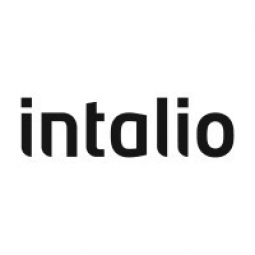Technology Category
- Analytics & Modeling - Machine Learning
- Analytics & Modeling - Predictive Analytics
Applicable Industries
- Electronics
- Transportation
Applicable Functions
- Maintenance
- Quality Assurance
Use Cases
- Inventory Management
- Leasing Finance Automation
Services
- System Integration
- Training
About The Customer
The General Auditing Bureau (GAB) is the supreme audit institution in the Kingdom of Saudi Arabia. It is responsible for the post-auditing of the state’s revenues, expenditures, movable and fixed assets. In addition, it exercises auditing control to ensure proper utilization and maintenance of the previously mentioned resources. GAB was one of the first entities to take the step towards digital transformation in line with the Saudi Vision 2030. It aimed to connect more than 1000 governmental and semi-governmental entities covered by GAB’s supervision with the Smart Electronic Auditing Platform, SHAMEL.
The Challenge
Before the digital transformation, the General Auditing Bureau (GAB) of Saudi Arabia was dealing with a massive volume of paperwork. The data and documents associated with related governmental entities were collected and transferred manually, which was a complex and time-consuming process. This method of operation limited their performance quality and extent due to the need for a large number of auditors, the excess number of documents, and the complexity of the process in terms of transportation, room, and other risks. GAB was keen on implementing an electronic system to automate its business procedures, as part of the Saudi Vision 2030 for creating smart cities, the National Transformation Program 2020, and the strategic plan for the digital transformation of the General Auditing Bureau. GAB needed a solution to handle many manual tasks, fight corruption in public institutions, improve financial supervision, reduce the mismanagement of financial resources, and facilitate and accelerate the exchange of electronic documents and audit results.
The Solution
To address these challenges, Intalio experts designed SHAMEL, an electronic monitoring system, to complete the auditing work of the General Audit Bureau and facilitate the exchange of data and financial documents. SHAMEL was implemented in several phases. The first phase involved automating all auditing processes to reduce the number of auditors, save room, and perform better in less time. The second phase involved implementing SHAMEL connector and Capturing application at all agencies premises, which allowed them to link electronically into the system and enable sharing all financial documents and data. The third phase involved SHAMEL Big Data and Analytics, which allowed the General Auditing Bureau to store a massive amount of financial data to be used in auditing and apply analytics on these data to get better auditing results. The fourth phase involved SHAMEL Electronic Support Platform, which provides technical and administrative support for the governmental entities. The future phases involve SHAMEL Raw Data Management and SHAMEL Smart Auditing platform, which will enable artificial intelligence and machine learning in the automated auditing processes.
Operational Impact
Quantitative Benefit

Case Study missing?
Start adding your own!
Register with your work email and create a new case study profile for your business.
Related Case Studies.

Case Study
Remote Temperature Monitoring of Perishable Goods Saves Money
RMONI was facing temperature monitoring challenges in a cold chain business. A cold chain must be established and maintained to ensure goods have been properly refrigerated during every step of the process, making temperature monitoring a critical business function. Manual registration practice can be very costly, labor intensive and prone to mistakes.

Case Study
Airport SCADA Systems Improve Service Levels
Modern airports are one of the busiest environments on Earth and rely on process automation equipment to ensure service operators achieve their KPIs. Increasingly airport SCADA systems are being used to control all aspects of the operation and associated facilities. This is because unplanned system downtime can cost dearly, both in terms of reduced revenues and the associated loss of customer satisfaction due to inevitable travel inconvenience and disruption.

Case Study
IoT-based Fleet Intelligence Innovation
Speed to market is precious for DRVR, a rapidly growing start-up company. With a business model dependent on reliable mobile data, managers were spending their lives trying to negotiate data roaming deals with mobile network operators in different countries. And, even then, service quality was a constant concern.

Case Study
Digitize Railway with Deutsche Bahn
To reduce maintenance costs and delay-causing failures for Deutsche Bahn. They need manual measurements by a position measurement system based on custom-made MEMS sensor clusters, which allow autonomous and continuous monitoring with wireless data transmission and long battery. They were looking for data pre-processing solution in the sensor and machine learning algorithms in the cloud so as to detect critical wear.

Case Study
Cold Chain Transportation and Refrigerated Fleet Management System
1) Create a digital connected transportation solution to retrofit cold chain trailers with real-time tracking and controls. 2) Prevent multi-million dollar losses due to theft or spoilage. 3) Deliver a digital chain-of-custody solution for door to door load monitoring and security. 4) Provide a trusted multi-fleet solution in a single application with granular data and access controls.








